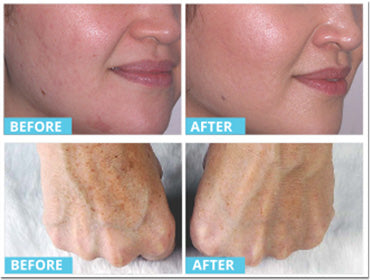, slow wound healing, and bone density concerns caused by weightlessness throughout space travel.
In this type of treatment, the light just serves as an activating representative for the medication. There are many various types of red light therapy.
Red light is thought to work by producing a biochemical impact in cells that reinforces the mitochondria. By increasing the function of the mitochondria utilizing RLT, a cell can make more ATP.

RLT is various from laser or intense pulsed light (IPL) therapies since it doesn't cause damage to the skin surface area. Laser and pulsed light treatments work by triggering regulated damage to the outer layer of the skin, which then causes tissue repair work. RLT bypasses this harsh action by directly promoting regeneration of the skin.
Ever considering that the initial experiments in space, there have been numerous scientific studies and thousands of lab studies carried out to determine if RLT has medical benefits. Many research studies have actually had promising results, however the benefits of red light treatment are still a source of debate. The Centers for Medicare and Medicaid Provider (CMS), for example, has determined that there isn't enough proof to show that these devices are much better than currently existing treatments for treating injuries, ulcers, and discomfort.
At the minute, nevertheless, there's some evidence to recommend that RLT may have the following benefits: Currently, RLT isn't backed or covered by insurer for these conditions due to lack of enough proof. Although, a few insurance provider now cover the use of RLT to prevent oral mucositis throughout cancer treatment.
RLT is considered experimental for many conditions. There's limited-to-no proof showing that traffic signal treatment does the following: It's crucial to keep in mind that when RLT is utilized with cancer treatments, the light is only used to activate another medication. Other light therapies have actually been utilized to assist with a few of the conditions above.
Blue light treatment is more frequently used for acne, with limited effectiveness. Red light wavelengths aren't the only wavelengths to be studied for medical purposes. Blue light, green light, and a mixture of different wavelengths have also been the subject of comparable experiments in humans. There are other type of light-based treatments available.
You can likewise find FDA-approved devices online that you can acquire and use in the house. Rates will vary. You can attempt utilizing these devices to fight the indications of aging, like age spots, great lines, and wrinkles, however make certain to check out the instructions thoroughly. For more targeted RLT, you'll need to see a skin doctor initially.